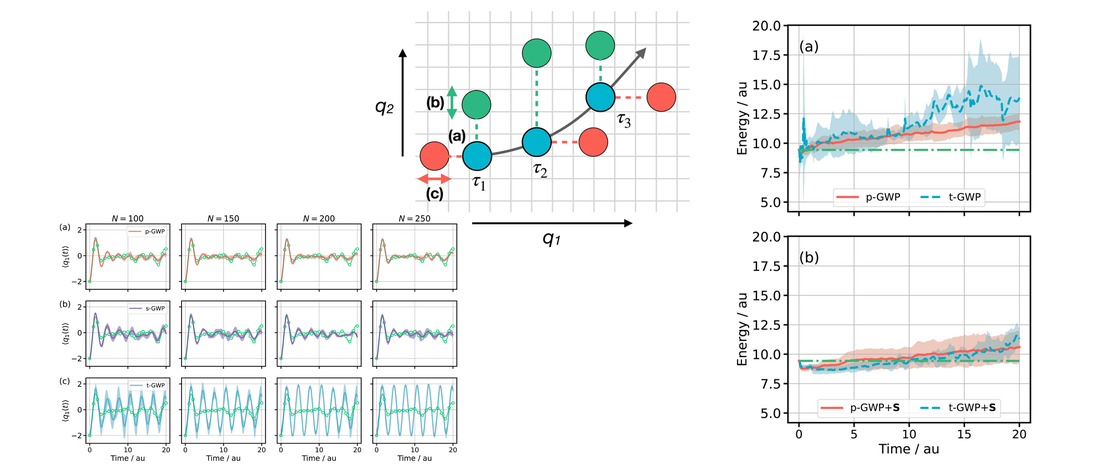
Tethered Gaussian wavepackets for quantum dynamics simulations: Sticking together for better convergence
- Lidice Cruz-Rodriguez and Scott Habershon
- Publication
- July 21, 2025
Abstract:
Standard Gaussian products are frequently employed as a basis to represent potential energy surfaces (PESs) or time-dependent wavefunctions. The effective “volume” of standard Gaussian products decreases as dimensionality f increases, meaning that rapidly growing basis sets are required to obtain accurate results as f grows. Here, we show that the flexibility inherent in Gaussian-based simulations allows development of new basis sets in which behavior at higher-dimensionality is improved. For the case of PES regression, we first show that recasting Gaussian basis functions in an “additive” form improves fitting convergence in higher-dimensional problems. Taking inspiration from these PES regression studies, we then propose two new Gaussian wavepacket (GWP) basis functions—stretched and tethered GWPs—for quantum dynamics simulations. When combined with careful choice of initial GWP conditions, we find that tethered GWP basis sets, in particular, improve convergence of predicted time-dependent observables compared to standard product GWPs. The new GWP basis sets proposed here are readily compatible with all previous GWP-based quantum dynamics strategies, opening a path toward more accurate predictions with smaller basis sets.
Additional Resources
DOI:
Quick Ref:
J. Chem. Phys. 163, 024127 (2025)